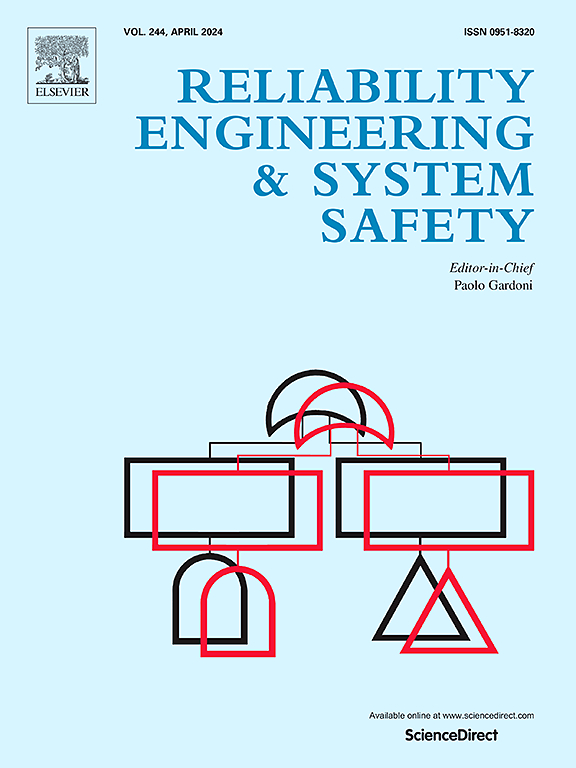Improving reliability of safety countermeasure evaluation at highway-rail grade crossings through aleatoric uncertainty modeling with machine learning techniques
IF 9.4
1区 工程技术
Q1 ENGINEERING, INDUSTRIAL
引用次数: 0
Abstract
Traditional Collision Modification Factor (CMF) calculation methods rely on simplistic statistical models that often fail to account for the complex, non-linear relationships influencing collision rates, leading to uncertain estimates. To address this gap, this study aims to improve the reliability of CMF estimation for safety countermeasures by introducing a novel hybrid model that combines Negative Binomial (NB) regression with a Long Short-Term Memory (LSTM) neural network to estimate aleatoric uncertainty. In other words, the proposed method integrates statistical modelling with machine learning techniques within the Empirical Bayes (EB) framework to compute uncertainty for enhancing CMF accuracy and stability. By increasing the reliability of collision frequency predictions and calculating more precise CMFs, the proposed method enables the selection of appropriate countermeasures, ultimately reducing fatalities and costs. The model is trained using data from Highway-Rail Grade Crossings (HRGC) inventory and collision records from the Federal Railroad Administration (FRA) for 2016–2022. The NB regression model provides a statistical foundation for collision prediction, while the LSTM component models uncertainties, significantly improve CMF calculation. Compared to the traditional NB model, the hybrid NB-LSTM approach reduces root mean squared error (RMSE) by 62.5 % and mean absolute error (MAE) by 61 % in predicting collision frequencies, leading to more reliable CMFs. The model identifies that gates reduce collisions by 61 % in high-traffic HRGCs, bells decrease collisions by 67 % in high-speed areas, and flashing lights achieve a 72 % reduction in low-traffic, high-speed crossings. Additionally, the proposed method achieves lower standard errors (S.E.) across all countermeasures.
求助全文
约1分钟内获得全文
求助全文
来源期刊

Reliability Engineering & System Safety
管理科学-工程:工业
CiteScore
15.20
自引率
39.50%
发文量
621
审稿时长
67 days
期刊介绍:
Elsevier publishes Reliability Engineering & System Safety in association with the European Safety and Reliability Association and the Safety Engineering and Risk Analysis Division. The international journal is devoted to developing and applying methods to enhance the safety and reliability of complex technological systems, like nuclear power plants, chemical plants, hazardous waste facilities, space systems, offshore and maritime systems, transportation systems, constructed infrastructure, and manufacturing plants. The journal normally publishes only articles that involve the analysis of substantive problems related to the reliability of complex systems or present techniques and/or theoretical results that have a discernable relationship to the solution of such problems. An important aim is to balance academic material and practical applications.
 求助内容:
求助内容: 应助结果提醒方式:
应助结果提醒方式:


